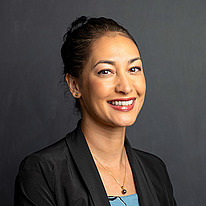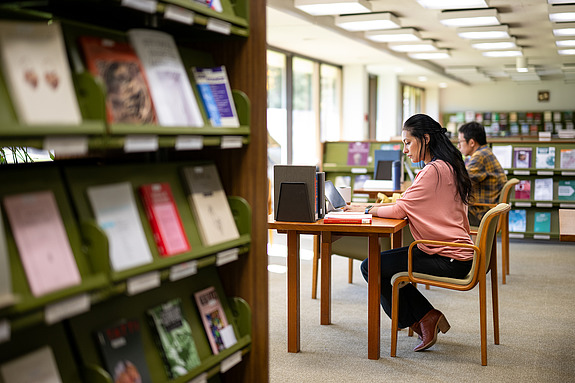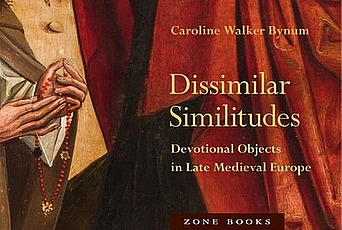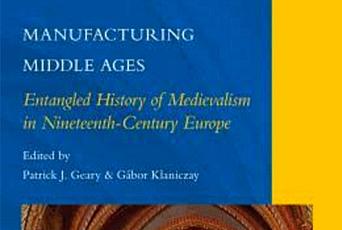When Sierra Lomuto arrived at the Institute in the autumn, she was working through a thorny problem in her discipline of medieval studies. Medieval studies has conventionally been a European field, but scholars have been seeking ways to move beyond this scope, in order to think about the global history of that period.
“Many people think of the Middle Ages as being stationary—people were not in contact, everybody was isolated. Every medievalist knows that Europe was not isolated or cut off from Africa and Asia,” says Lomuto. “But the way that we have studied that past has severed those connections. In the last twenty years, medievalists have been interested in what is now being termed ‘the global Middle Ages,’ where we think about Africa, Asia, and Europe together, either comparatively or as an interconnected whole.”1
This endeavor is complicated by the difficulty of taking a European centered term like “Middle Ages” and applying it to people and places that have created their own periodization and have their own way of thinking about their history. In some ways, medievalists’ efforts to disrupt Euro-centrism has brought about its re-entrenchment.
Around the beginning of the academic term, Lomuto, Member in the School of Historical Studies, was invited to write the afterword for a cluster of essays in the Spring 2024 issue of postmedieval on how to de-center Europe outside of the rubric of the global Middle Ages, called “Grounds for a trans-regional medieval studies, beyond the global.” As she sat by the pond on a gorgeous fall day, she read the four essays featured in the issue and pondered how she wanted to approach the problem.2

She found inspiration in Einstein: “In one of the essays I was responding to, the author talks about needing to keep one foot in your own field but widen out like a drafting compass. One foot is you and the other foot circles out to other fields you might not be an expert in to inform your perspective. And I really loved that! But if you’re in this Eurocentric field, you’re still caught in an epistemological imperializing gaze. And so, I was considering the way Einstein thinks about gravity: what grounds us? As matter, we actually impact the shape of spacetime. Where gravity resides is in that space between matter and spacetime, and it’s constantly shifting. It is the relationship between things that grounds us, where we can find our gravity moves and shifts.” Lomuto seeks to embrace movement, using it as a way to orient the discipline towards a three-dimensional scope that is more about “relationships between” than any central point of origin. She writes, “To be global, the circle must become a sphere, a process that engulfs the center in three-dimensional space. The surface is left center-less, but orientation is paramount. … As Einstein has taught us, gravity exists within the relationship between the curvature of spacetime and the matter that interacts with it. In other words, we can find the force that grounds us within the dynamic and dialogic movement between ourselves and that with which we engage.”
Instead of relying on a framework to engage the past, putting the notion of spacetime to use in our historical analysis moves us beyond the global, enabling “stability not in a stationary foot but in the ever-shifting relations between.”
This constant shifting of perspectives, and finding a sense of grounding in such motion, is undergirded by the willingness to write a piece that is not the be-all and end-all answer to a problem, but simply one perspective that may or may not be useful to us in the future. “My conclusion in the afterword is that we have to have this humility of not knowing, and not coming up with definitive conclusions. We have to move the globe, and we have to move ourselves. Some work might become irrelevant—and that’s actually a good thing! Because we are supposed to be constantly moving.” It is this that allows us to truly think together. “That is what the Institute is. When I’m working on my monograph, I’m thinking in conversation with other people. And that’s the way that the most compelling scholarship happens.
Lomuto’s monograph explores Europe’s relationship to the Mongol empire in the thirteenth century and how the Latin discourse that was produced about the Mongols directly sources the literary output in England in the fourteenth century. In this, we can see the ways that race is produced—a production that is different than the dominant understanding of race today. It specifically asks: can medieval European representations of Mongols illuminate deeper complexities about the mechanics of the twinned stereotypes of yellow perilism and the model minority in modernity?
Motivating her book is the idea that traversing the medieval and modern divide can productively expand our understanding of the relational and complex ways that Asians are racialized today, and that it is the intangible faculty of imagination that can carry us across these disparate temporalities while still holding onto historical specificity. Thinking about her time at IAS, she concludes, “I don't think it would be possible for me to adequately explore these questions without the kind of collaborative scholarly community that the IAS cultivates.”
[1] While speaking with the Institute Letter, Sierra emphasized the influence of the Institute’s own Director and Leon Levy Professor David Nirenberg on medievalists’ thinking about how different communities have mutually shaped one another’s intellectual, religious, and cultural developments.
[2] This is not the first time Lomuto has written on this topic. Around the time that she was arriving at the Institute, a special issue of boundary 2 that Lomuto edited was published. For this issue, she invited ten scholars of varying disciplines to contribute essays reflecting on the limits of the category ‘medieval’ to thinking about the interconnections across these different geographies and across time. Lomuto’s introduction presents her own research on the papers and archive of Belle da Costa Greene, the founding librarian at the Morgan Library whose curation of manuscripts from places other than Europe (like Persia and Egypt), made for what today can be considered a very global archive. The issue makes no one claim except to conclude that there is more work to do in breaking apart Eurocentric historiographies and epistemologies.



